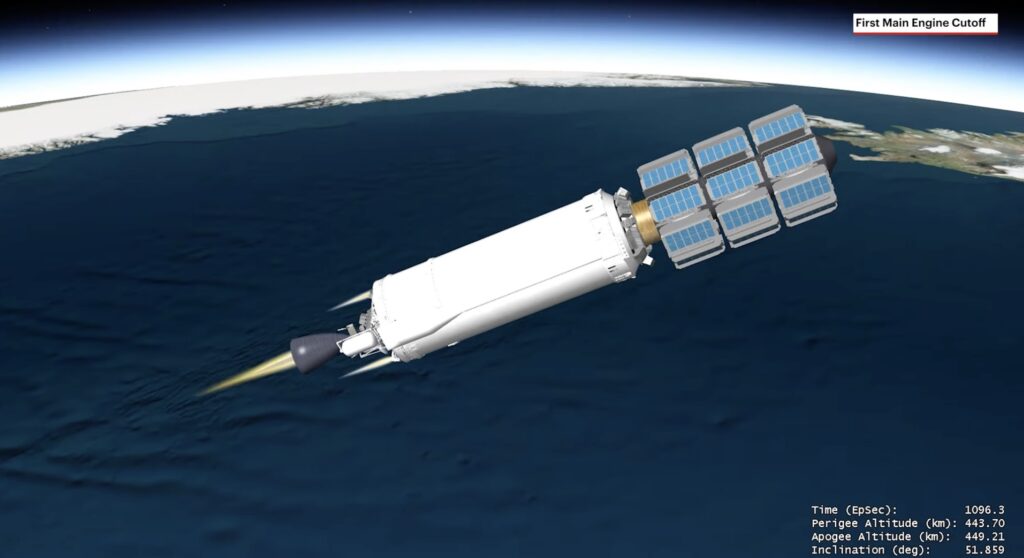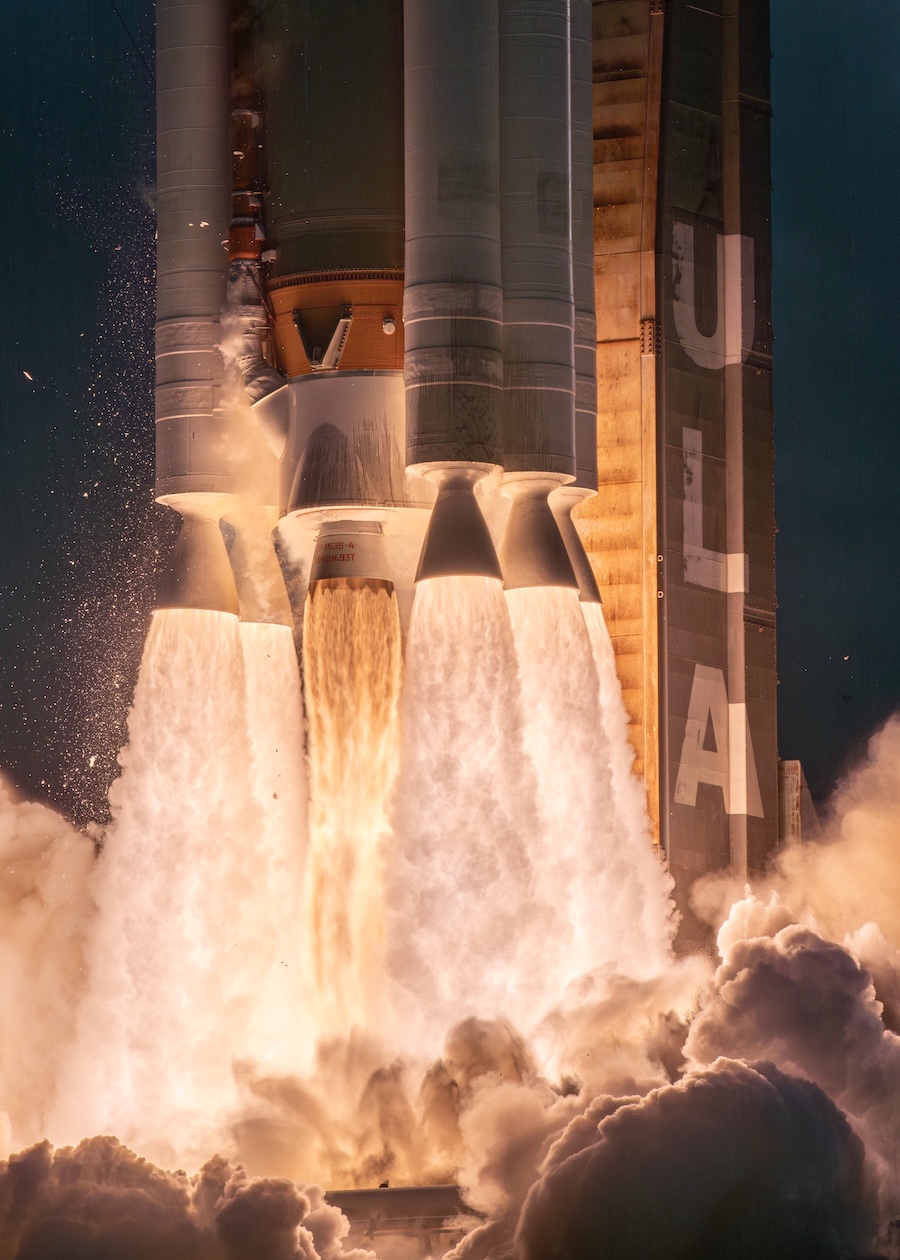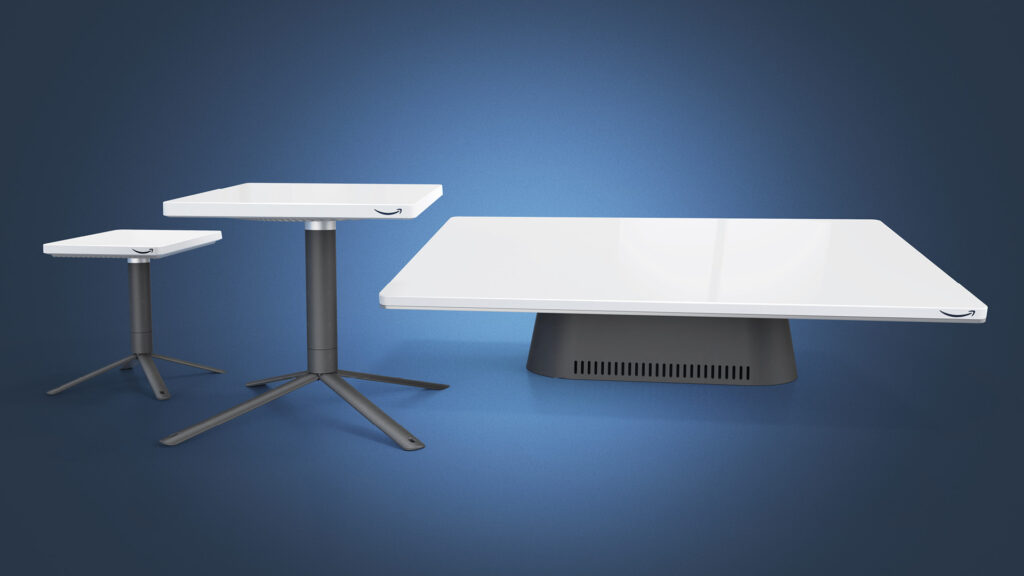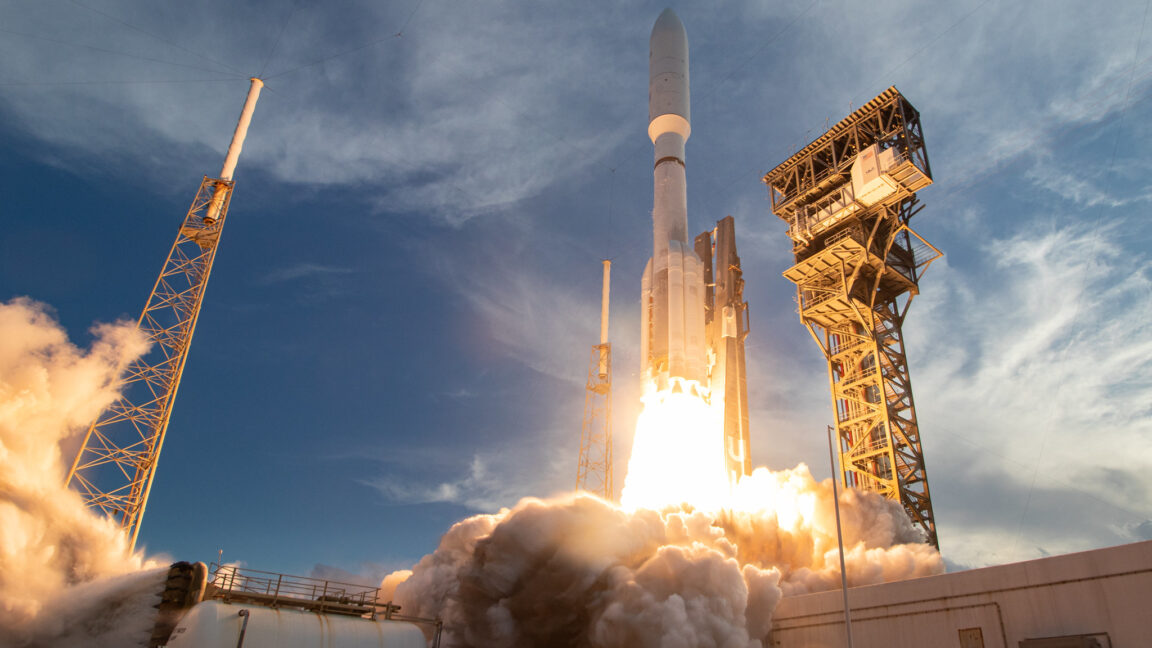A United Launch Alliance Atlas V rocket lifted off from Florida with 27 Kuiper satellites.
The first 27 operational satellites for Amazon's Kuiper broadband network lifted off from Florida's Space Coast on Monday evening, the opening salvo in a challenge to SpaceX's dominant Starlink global Internet service.
Amazon's Project Kuiper, costing up to $20 billion, will beam high-speed, low-latency broadband signals to consumers around the world. Monday's milestone launch kicks off a test campaign in low-Earth orbit to verify the functionality and performance of Amazon's satellites. In a statement earlier this month, Amazon said it planned to begin providing service to customers later this year.
These initial services are likely to have limited reach. Amazon needs more than 80 launches to complete the first-generation Kuiper network, and this will probably take several years.
Amazon's first 27 satellites soared into orbit from Cape Canaveral Space Force Station, Florida, aboard a United Launch Alliance Atlas V rocket. The Atlas V flew in its most powerful configuration, with five strap-on solid rocket boosters and an extended nose cone to accommodate the Kuiper satellites. Amazon's 27 spacecraft added up to become the heaviest payload ever launched by an Atlas V in 102 missions.
A first step in a long journey
The 205-foot-tall (62.5-meter) rocket lifted off at 7:01 pm EDT (23:01 UTC) Monday and headed northeast from Cape Canaveral. In the first five minutes of the flight, the Atlas V jettisoned its five boosters, payload fairing, and kerosene-fueled first stage. A Centaur upper stage took over to accelerate the rocket to orbital velocity, approximately 17,000 mph (7.6 kilometers per second).
United Launch Alliance ended its live video coverage of the mission a few minutes after the launch at the request of Amazon, which insisted on a level of secrecy normally reserved for spy satellites. Amazon has not publicly released any photos or illustrations of the Kuiper satellites, breaking from the convention established by other Western companies with megaconstellations.
An Amazon spokesperson said a rudimentary illustration in a ULA-produced animation of the launch sequence provides a "sense of the satellite stack" on top of the Atlas V rocket. For launch, the spacecraft were attached to a lightweight dispenser, like ornaments on a Christmas tree.

After reaching orbit, the Kuiper satellites deployed from the dispenser at an altitude of roughly 280 miles (450 kilometers) and an inclination of 51.9 degrees to the equator. Amazon and ULA confirmed a successful outcome to the launch later Monday night.
"Important moment for Project Kuiper as we just confirmed our first 27 production satellites are operating as expected in low-Earth orbit," wrote Andy Jassy, Amazon's CEO, on X. "While this is the first step in a much longer journey to launch the rest of our low-Earth orbit constellation, it represents an incredible amount of invention and hard work. Am really proud of the collective team."
Amazon aims to launch thousands more Kuiper satellites in the next few years. When complete, the first generation of the Kuiper constellation will consist of 3,232 satellites flying in 98 orbital planes crisscrossing the planet at altitudes of less than 400 miles.
In 2022, Amazon signed the largest commercial launch contract in history, snatching up rides on ULA's new Vulcan rocket, Blue Origin's New Glenn, and Arianespace's Ariane 6 launcher. Amazon booked nine launches on ULA's soon-to-retire Atlas V rocket the previous year and reserved three flights on the Falcon 9 rocket operated by rival SpaceX in 2023.
Amazon is using the Atlas Vs to boost its first batches of satellites to orbit. An Atlas V rocket launched 18 months ago with a pair of prototype Kuiper satellites for testing in space. There are seven Atlas Vs remaining on Amazon's contract following Monday's launch.
ULA won the majority of Amazon's launch contracts, with 38 flights on the company's new Vulcan rocket and nine on the Atlas V. Arianespace won 18 missions using its Ariane 6 rocket, and Blue Origin—owned by Amazon founder Jeff Bezos—won 12 missions, with a contract option for 15 more.
Only SpaceX has demonstrated the kind of high-tempo launch rate Amazon expects of its launch providers. SpaceX recently launched its 250th Starlink mission and now has more than 7,000 Starlink satellites in orbit, with multiple launches adding more each week. SpaceX's Falcon 9 rocket was already a mature, reliable launch vehicle when Starlink missions began flying.
Amazon's launch providers are all flying brand-new rockets, other than the Atlas V and Falcon 9. New rockets often have trouble ramping up to their promised launch cadence.
Amazon is helping to fund a big expansion in ULA's footprint at Cape Canaveral, an effort that officials say will double the company's launch capacity. The investment to fund the growth in ULA's capability to support Kuiper launches totals about $2 billion, with around $500 million going toward upgrades at Cape Canaveral.
Those upgrades include the outfitting of a second vertical hangar and a second mobile launch platform for Vulcan rockets, alongside the integration facility and launch table already built to support the first few Vulcan missions. Having dual lanes for launch processing in Florida will allow ULA to fly as many as 25 Vulcan rockets per year, the company said. ULA's primary Vulcan customers are the US Space Force and Amazon.
"The addition of a second launch processing capability allows for dual, simultaneous launch processing between both integration facilities seamlessly," said Tory Bruno, ULA's president and CEO, in a statement.
"This launch marks the first step toward the future of our partnership and increased launch cadence," Bruno said. "We have been steadily modifying our launch facilities in Cape Canaveral to support the capacity for future Project Kuiper missions in a manner that will ultimately benefit both our commercial and government customers as we endeavor to save lives, explore the universe, and connect the world."

Amazon ground controllers in Redmond, Washington, are overseeing the operation of the first 27 Kuiper satellites. Engineers there will test each satellite's ability to independently maneuver and communicate with mission control. So far, this appears to be going well.
The next step will involve activating the satellites' electric propulsion systems to gradually climb to their assigned orbit of 392 miles (630 kilometers).
A moveable deadline

Amazon and its launch suppliers need to get moving. Kuiper officials face a July 2026 deadline from the Federal Communications Commission to deploy half of the fleet's 3,232 satellites to maintain network authorization. This is not going to happen. It would require an average of nearly one launch per week, starting now.
The time limit is movable, and the FCC has extended network authorization deadlines before. Brendan Carr, the Trump-appointed chairman of the FCC, has argued for a more "market-friendly regulatory environment" in a chapter he authored for the Heritage Foundation's Project 2025, widely seen as a blueprint for the Trump administration's strategies.
But Carr is a close ally of Elon Musk, owner of Kuiper's primary competitor, Starlink.
Amazon is not selling subscriptions for Kuiper service yet, and the company has said its initial focus will be on testing Kuiper connectivity with "enterprise customers" before moving on to consumer broadband. Apart from challenging Starlink, Kuiper will also compete in some market segments with Eutelsat OneWeb, the London-based operator of the only other active Internet megaconstellation.
OneWeb's more than 600 satellites provide service to businesses, governments, schools, and hospitals rather than direct service to individual consumers.
Hope you enjoyed this news post.
Thank you for appreciating my time and effort posting news every day for many years.
News posts... 2023: 5,800+ | 2024: 5,700+ | 2025 (till end of March): 1,357
RIP Matrix | Farewell my friend ![]()



3175x175(CURRENT).thumb.jpg.b05acc060982b36f5891ba728e6d953c.jpg)

Recommended Comments
There are no comments to display.
Join the conversation
You can post now and register later. If you have an account, sign in now to post with your account.
Note: Your post will require moderator approval before it will be visible.